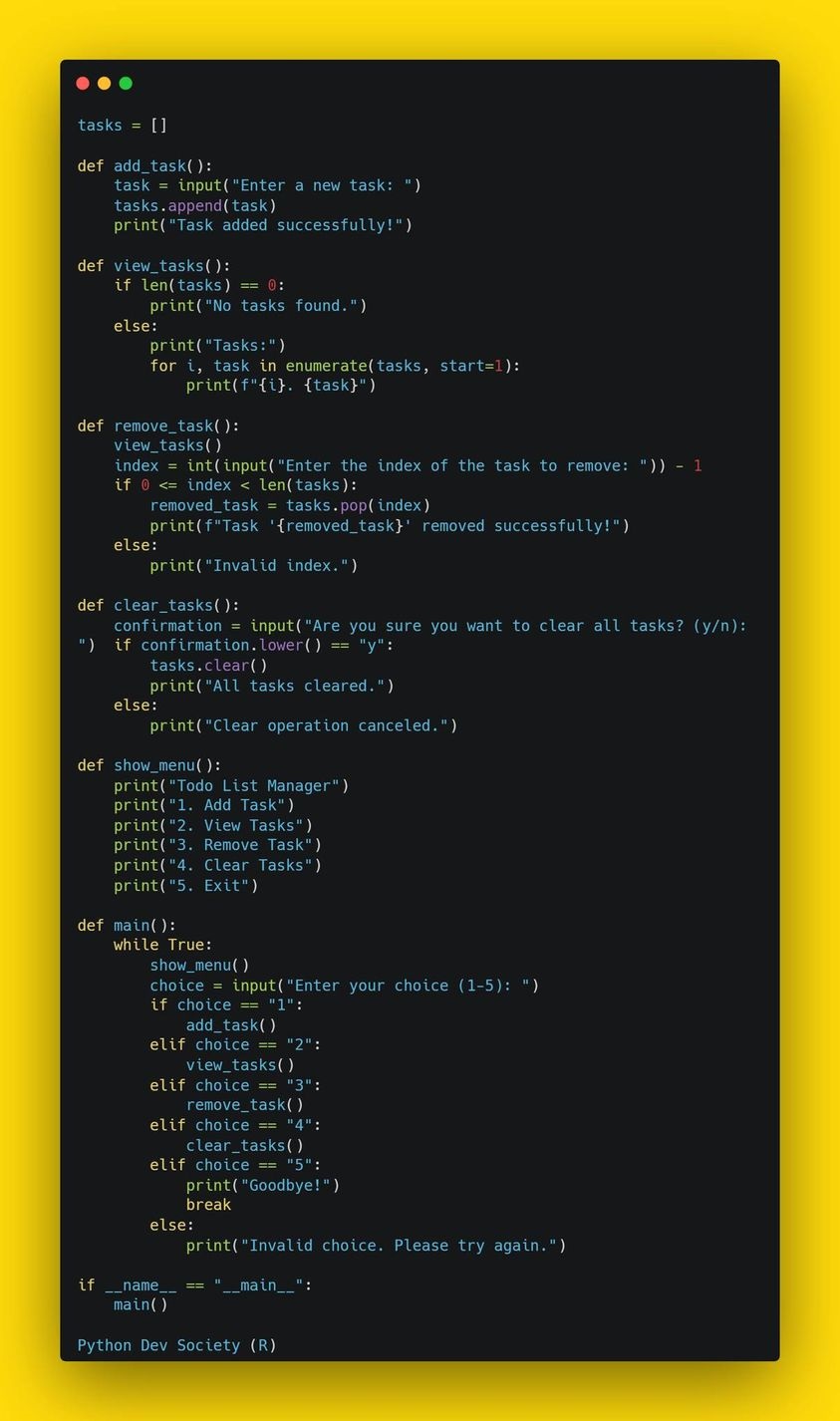🐍 Exciting Python Trends for 2024 🚀
Posted 18 September 2023

🚀💻 Greetings, Python Enthusiasts! 💻🚀
Python Dev Society, get ready for an amazing year ahead! 🎉 Here are some trends we can expect in the Python world for 2024:
🚀 **Performance Improvements**: Python has been on a journey to improve its performance, and the future looks even brighter. Expect further enhancements, possibly through projects like Pyston or optimized Python implementations. 🏁
🔍 **Type Hinting and Static Analysis**: The adoption of type hinting and static analysis through tools like the typing module and MyPy is gaining momentum. Python's type system might evolve further, making it easier to catch errors at compile-time. 🧐
🧠 **AI and Machine Learning Ecosystem**: Python's role in AI and machine learning will continue to expand. Anticipate more efficient libraries, improved support for hardware accelerators, and a growing community of researchers and practitioners. 🤖
🌐 **Web Development and Frameworks**: Python's web development frameworks, including Django and Flask, will keep evolving to support modern web practices. Think serverless computing and Progressive Web Apps (PWAs). 🌐
📊 **Data Science and Big Data**: Python's data science ecosystem remains robust. Expect further developments in distributed computing and big data processing libraries, perfect for handling larger datasets and complex analyses. 📈
🛡️ **Security and Privacy**: With growing concerns about cybersecurity and data privacy, Python might see enhancements in security features and libraries, covering encryption, authentication, and secure coding practices. 🔐
🌌 **Quantum Computing**: As quantum computing advances, Python may witness the emergence of quantum programming libraries and frameworks, simplifying work with quantum computers. 🌌
☁️ **Serverless and Cloud-Native Development**: Python's role in serverless computing and cloud-native development could expand further with the continued growth of cloud platforms. Expect new libraries and tools to facilitate serverless development with Python. ☁
🌐 **IoT and Edge Computing**: Python's lightweight footprint and ease of use make it an ideal candidate for IoT and edge computing. Be prepared for more Python-based solutions for developing applications in these areas. 🌍
Exciting times ahead for Python developers! Which trend are you most looking forward to exploring in 2024? Let's keep the Python community thriving and innovating! 🐍💡
Happy coding, Pythonistas! 🐍💻✨
🔥 Join the Python Dev Society (R) Facebook page today to explore more Python-related content, interact with fellow developers, and stay up-to-date with the latest trends and tips in the Python community. Let's learn, collaborate, and grow together! 💪💻
📢 Spread the word and invite your Python-loving friends to join our vibrant community! Just remember to tag us as Python Dev Society (R) when mentioning our page. Happy coding! 🐍❤️
Searching Algorithms
Posted 12 June 2023

📢 Exciting News from Python Dev Society! 🐍🚀
🔎 Searching Algorithms: Linear Search vs. Binary Search 🔍
🗒Hey Pythonistas! Today, we're diving into the world of searching algorithms. 🕵️♂️ In programming, efficient searching is crucial, and two popular algorithms come to the forefront: Linear Search and Binary Search. Let's explore them and see how they work! 🧐
🔸 Linear Search 🔸
🔍 Linear Search is a simple algorithm that checks each element of a list one by one until a match is found or the end of the list is reached. It's like scanning a book page by page until you find the information you're looking for. 📖
⏩ Advantages:
✅ Easy to understand and implement
✅ Works on both sorted and unsorted lists
⏪ Disadvantages:
❌ Inefficient for large lists
❌ Time complexity: O(n) - the worst case scenario requires checking every element
Check out the example image below for a visual representation of Linear Search. ⤵
️
🔸 Binary Search 🔸
🔍 Binary Search is an efficient algorithm that works on sorted lists. It repeatedly divides the search space in half, eliminating half of the remaining elements in each iteration. It's like finding a word in a sorted dictionary by opening it in the middle and deciding whether to search in the first or second half. 📚
⏩ Advantages:
✅ Fast searching for large sorted lists
✅ Time complexity: O(log n) - each iteration halves the search space
⏪ Disadvantages:
❌ Requires a sorted list as input
❌ More complex implementation compared to linear search
Take a look at the example image below for a visual representation of Binary Search. ⤵️
📝🔗 Are you looking for a place to discuss, learn, and showcase your Python skills? Look no further! The Python Dev Society (R) Facebook page is here to cater to all your Python programming needs.
Happy coding, Pythonistas! 🐍💻✨
🖥️ Whether you're a beginner or an experienced Python developer, this code snippet can serve as a great starting point for your own mini Python project. Feel free to modify and expand upon it to suit your specific needs and creativity!
🔥 Join the Python Dev Society (R) Facebook page today to explore more Python-related content, interact with fellow developers, and stay up-to-date with the latest trends and tips in the Python community. Let's learn, collaborate, and grow together! 💪💻
📢 Spread the word and invite your Python-loving friends to join our vibrant community! Just remember to tag us as Python Dev Society (R) when mentioning our page. Happy coding! 🐍❤️
Todo List Manager
Posted 30 May 2023

🐍🌐 Introducing the Python Dev Society (R) Facebook Page: Your Ultimate Destination for Python Enthusiasts! 🚀
🗒️✨ Today, we want to share with you a simple and practical Python code snippet for a Todo List Manager.
📝🔗 Are you looking for a place to discuss, learn, and showcase your Python skills? Look no further! The Python Dev Society (R) Facebook page is here to cater to all your Python programming needs.
🌟 This code represents a simple to-do list manager in Python. It allows you to add tasks, view existing tasks, remove tasks, and even clear all tasks from the list.
🖥️ Whether you're a beginner or an experienced Python developer, this code snippet can serve as a great starting point for your own mini Python project. Feel free to modify and expand upon it to suit your specific needs and creativity!
🔥 Join the Python Dev Society (R) Facebook page today to explore more Python-related content, interact with fellow developers, and stay up-to-date with the latest trends and tips in the Python community. Let's learn, collaborate, and grow together! 💪💻
📢 Spread the word and invite your Python-loving friends to join our vibrant community! Just remember to tag us as Python Dev Society (R) when mentioning our page. Happy coding! 🐍❤️
Thanks, your message is sent successfully. We will contact you shortly!


